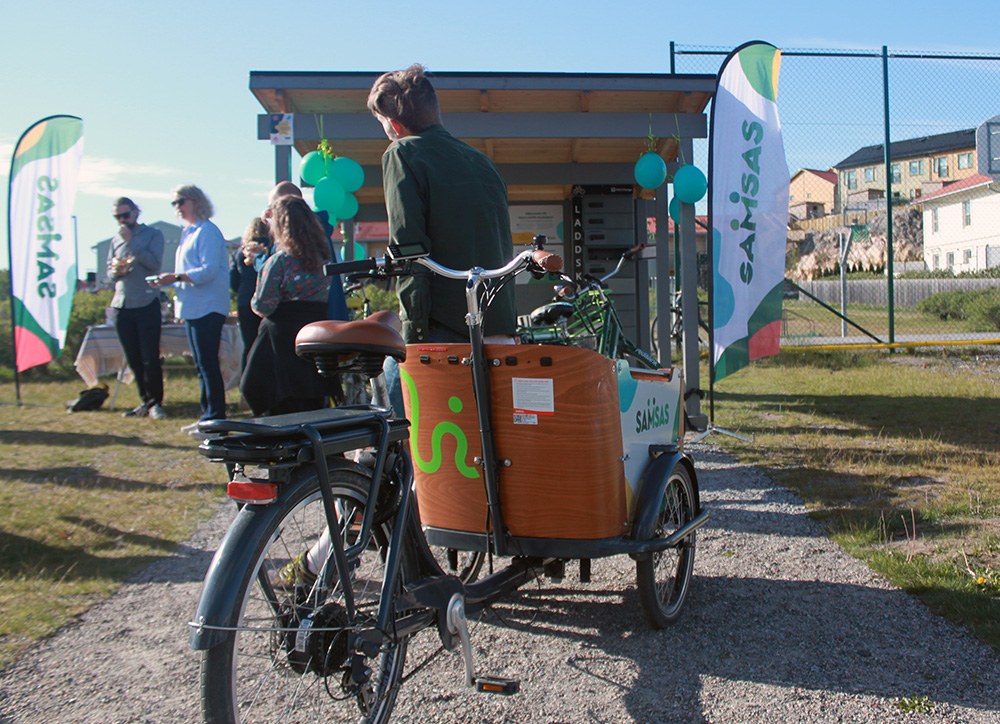Challenge of living without a car

How hard can it be to live a car-free everyday life? Quite problematic if you have to juggle work and leisure activities. This was demonstrated when a number of households in southern Stockholm were challenged to switch to electric bikes and public taxis.

“Our project has shown how difficult it is to make the switch, there is a lot of resistance. Some of it is about lifestyle changes and that is not always easy,” says Mia Hesselgren , a researcher in design for sustainable mobility at KTH.
She has participated in several Living Labs with citizen scientists who test how different climate-smart solutions work in practice. Over the past year, 14 families in the Riksten residential area in Botkyrka municipality have been 'co-researchers' - as they are called to emphasise their importance - in an initiative on future transport. The project is part of the Mistra Sustainable Accessibility and Mobility Services (SAMS) research programme.
The families have been given access to modes of transport designed to simplify commuting to work and other everyday journeys while also reducing dependence on their own cars. The vehicles - electric bikes, electric scooters, electric box bikes and public taxis - could be used for a small fee, roughly equivalent to the cost of public transport. Bookings are made via an app.
”This has been the 'carrot' for the residents: the availability of environmentally friendly transport in a smooth way and at a reasonable cost," says Hesselgren.
“Takes longer”
Pernilla, one of the citizen scientists, lives in the area with her husband. She has tried electric bikes, cargo bikes and scooters, but says they cannot fully replace the car.
“Time is the biggest factor. It takes longer if you have to use a bike, and it doesn't work practically for all errands,” she says.

Like the other households, Pernilla agreed to take part in the project because of her commitment to environmental issues and a desire to use the car as little as possible in everyday life.
“With some errands, it works perfectly well. It's also nice to get a little extra push on the bike with the electric motor, and with the box bike I've been able to get to the recycling centre with rubbish and waste, for example.”
Halving car journeys
However, she finds it difficult to do her leisure activities without the car. Horses are an interest but the stables are 15 kilometres away. Travelling there by public transport is also problematic because of all the packing to be done. She will soon be joining a running group and it is still unclear how she can get to the jogging track.
Mia Hesselgren identifies family leisure activities as the main reason for car dependency. This often involves taking children to activities far away from home.
“You want to be a sustainable citizen, but it's a long way to reorganising your daily life. Allowing the children to go to basketball practice or dance is more important than giving up the car.”

The challenge for households during the project was to halve car journeys. In fact, there was no direct reduction. But since the neighbourhood is a very car-based area, this was not really a surprising result for Hesselgren.
Views on good parenting
“We knew it was going to happen, now the question is what can be done in the future to make areas like Riksten, suburbs away from the city with families with children, more sustainable.”
The responsibility is multifaceted, she says.
“Municipalities need to think about this when they plan residential areas and how premises and places for leisure activities can be included in the overall picture. Public transport is an obvious part of facilitating more environmentally friendly transport in terms of frequency, departure times and areas served.”
The issue of lifestyle changes must also be addressed, says Hesselgren. “Among other things, we need to talk through our norms,” she says.
“The idea of being a good parent often means enabling our children to live an active life. I think that's really important, but when it's structured in a way that involves long car journeys, we need to think about how we can do it differently.”
Text: Christer Gummeson